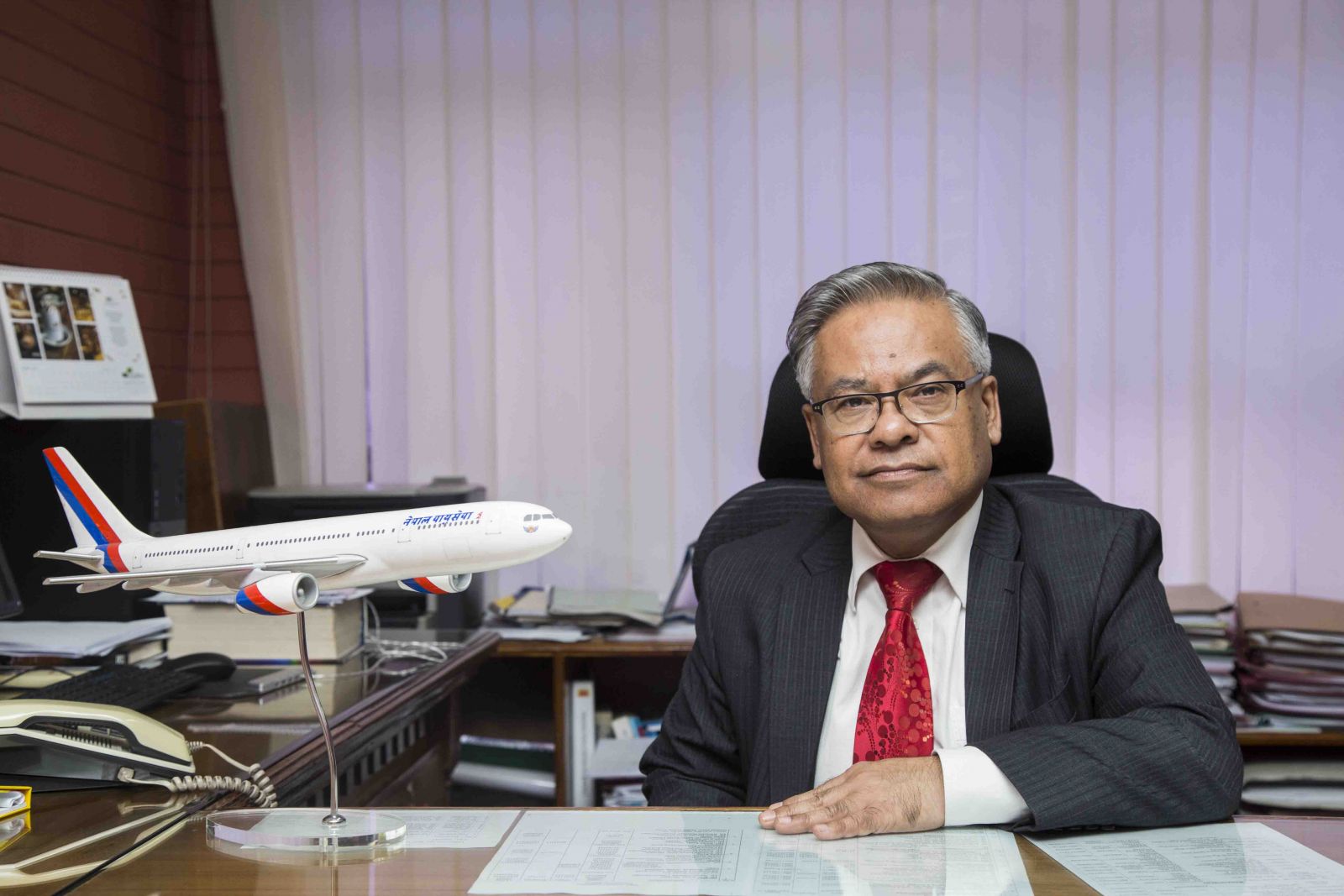
Learning From the Past, Aiming High Today
An organization is only as good as its leader, and there is no doubt that he is one of the best in the country, but he has a massive responsibility on his shoulders today.
As the flag carrier of the country, Nepal Airlines Corporation (NAC) continues to have a crucial role in uplifting the country’s economy. It has had its fair share of ups, and an equally fair share of downs, but fortunately, there’s an able captain in the cockpit today—Managing Director Saugat Ratna Kansakar, and here he talks about how high he wants NAC to fly in the coming years.
Q: How did you start your journey with NAC?
A: Initially, I worked as a telecommunication engineer. After that, I started working at Nepal Airlines. My initial tenure was quite short; two and a half years. After a gap of three-four years, I came back again!
Q: How did you manage such a change, from telecommunications to aviation?
A: It was quite a change from the field of telecommunication to aviation! I had this inner confidence that I could handle such a big change. What also inspired me was a book that I read, by the former IBM CEO, who worked in the food industry and from there onwards joined IBM.
Q: There was a historic shift in the company; it changed from RNAC to NAC. Your thoughts?
A: It was a very tough time. There were major changes in the entire structure of the corporation. What I would like to think is that, we are past it now, and we have emerged stronger as an organization.
Q: How do you see NAC’s involvement in the domestic sector?
A: This is an important thing, as from the domestic front we are a public corporation, and thus our aim is to serve the people first. What is interesting is that Nepal has many small airports, and our goal is to reach all of them. We currently have six Chinese aircraft, and we will be getting smaller Canadian aircraft in the near future to achieve this goal.
Q: Where do you see yourself in the near future?
A: Still working! (laughs). I know that if I continue to work, it will be for a public corporation, as that is how I started my career, and that is where I will end it, as well.
Q: What do you think about the current situation of tourism in Nepal?
A: The tourism sector in Nepal is growing, but at a very slow pace. Nepal has tremendous possibility in the tourism industry. We should focus on two things: first, publicity in countries with a high level of out-going tourists, like India and China, and Buddhist countries like Thailand, Sri Lanka, and Myanmar. Secondly, the government should help expand the international air service by helping the national flag carrier.
Q: What are NAC’s goals for the tourism sector?
A: For the last ten to fifteen years, NAC was focusing on “man-power countries” like the Middle East and Malaysia. Now, NAC is doing a strategic shift and has decided to help the tourism industry by making Nepal an affordable tourist destination. It is a fact that Nepal is still the most expensive air destination in the whole of Asia. The first step NAC took was to bring two wide-body aircrafts, which will arrive by May/June 2018. We are also adding two more narrow-body A320 aircrafts in the shortest possible time. NAC must go on and expand without interruption to bring in more and more tourists.
Q: What are your thoughts on the heavy airport traffic, and how can we overcome the problem?
A: Presently, congestion in TIA is very serious. The airport authority is doing its best. The government should give top priority to the construction of the new Pokhara and Bhairawa airports. It is estimated that those two new airports will take a load of 15% each from TIA, which will greatly ease traffic congestion in Kathmandu. Then, of course, the second international airport in Nijgadh should be constructed, which will do wonders for the aviation industry.
Q: How do you plan to improve Nepal Airlines as the flag carrier airline?
A: There are mainly two issues in NAC—fleet expansion and management improvement. Massive computerization has already been started as part of the management improvement process. Basically, I am focusing more on the leadership part, rather than on some micro-management issues. One of the most important issues within the management improvement plan is the air safety issue. On safety, there is no question of compromise. We must aim to achieve international standards on par with developed nations. Aviation is a totally different ball game, and it always takes time to show some results. I look forward to the future and what it holds for NAC and myself!











